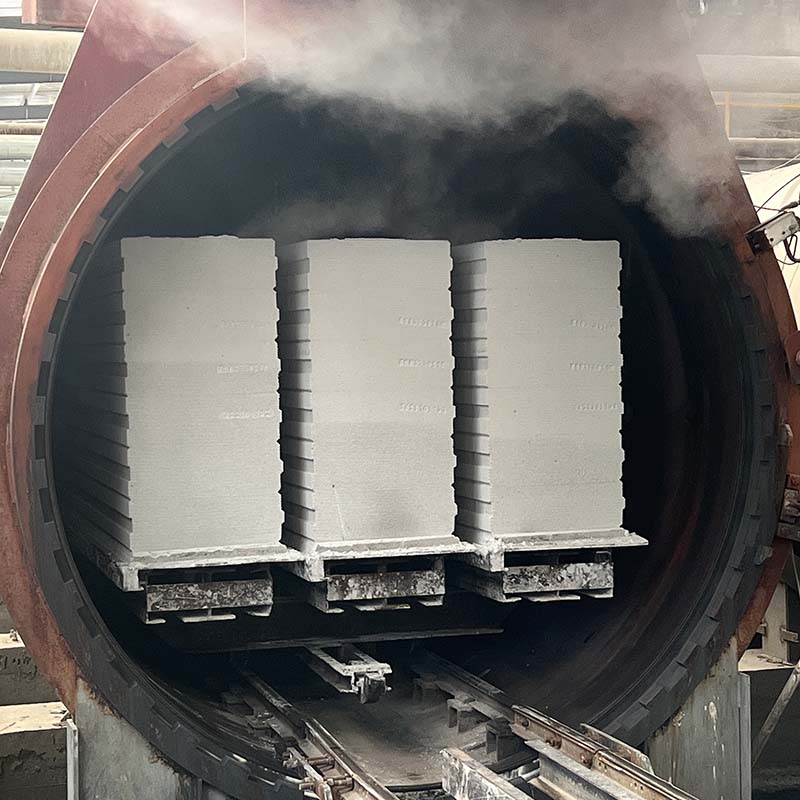
Image source:Aiwei block machine
Introduction
In recent years, the United States of America (USA) has witnessed a growing emphasis on sustainable construction practices and eco-friendly building materials. One notable addition to the construction landscape is AAC (Autoclaved Aerated Concrete) blocks, which are rapidly gaining recognition for their exceptional sustainability, energy efficiency, and versatility. This article explores the rise of AAC block production in the USA and how it addresses the increasing demand for sustainable building materials.
Chapter 1: The Shift Towards Sustainable Construction
The opening chapter sets the stage by examining the shift in the construction industry towards sustainability. It explores the environmental, economic, and social drivers behind this movement and why AAC blocks are emerging as a prominent choice for sustainable construction in the USA.
Chapter 2: Understanding AAC Blocks
This chapter delves into the composition, manufacturing process, and properties of AAC blocks. Readers will gain a comprehensive understanding of what makes AAC blocks a sustainable and efficient building material.
Chapter 3: Sustainable Manufacturing
AAC block production involves a unique and eco-friendly manufacturing process. Chapter 3 explores how AAC blocks are manufactured in the USA, highlighting the sustainable aspects of this process and the minimal environmental impact compared to traditional building materials.
Chapter 4: Energy Efficiency and Thermal Insulation
One of the standout features of AAC blocks is their exceptional thermal insulation properties. This chapter explains how AAC blocks contribute to energy-efficient buildings, reduce heating and cooling costs, and support the USA’s commitment to green construction.
Chapter 5: Case Studies in Sustainable Building
Real-world examples of sustainable construction projects in the USA that have incorporated AAC blocks are showcased in this chapter. Case studies provide insight into the practical applications and benefits of AAC blocks in various building types.
Chapter 6: Regulatory Framework and Certification
The USA has a stringent regulatory framework for construction materials. This chapter explores the certifications and standards that AAC blocks must adhere to and how government policies support the use of sustainable building materials.
Chapter 7: Architectural Design and Creativity
AAC blocks offer architects and designers newfound creative possibilities due to their versatility and ease of use. This chapter highlights architectural innovations and designs that have been made possible with AAC blocks.
Chapter 8: Economic and Environmental Benefits
AAC block production contributes to the USA’s economy and environment in various ways. This chapter explores the economic impact of the AAC block industry, including job creation and local development, as well as its environmental benefits in terms of reduced carbon emissions.
Chapter 9: Challenges and Future Prospects
While AAC block production is on the rise in the USA, this chapter addresses the challenges and barriers that the industry may face. It also looks at future prospects, including emerging trends and innovations in AAC block technology.
Chapter 10: Beyond AAC Blocks
The final chapter expands the discussion beyond AAC blocks and explores other sustainable construction practices and materials being embraced in the USA. It provides a holistic view of the sustainable construction landscape in the country.
Conclusion
The USA’s adoption of AAC block production represents a significant step toward sustainable and eco-friendly construction practices. As the construction industry continues to prioritize sustainability, AAC blocks have emerged as a versatile and innovative solution that addresses both environmental concerns and the need for energy-efficient buildings. This article demonstrates how AAC block production is meeting the demand for sustainable building materials in the USA, shaping the future of construction in the country.
